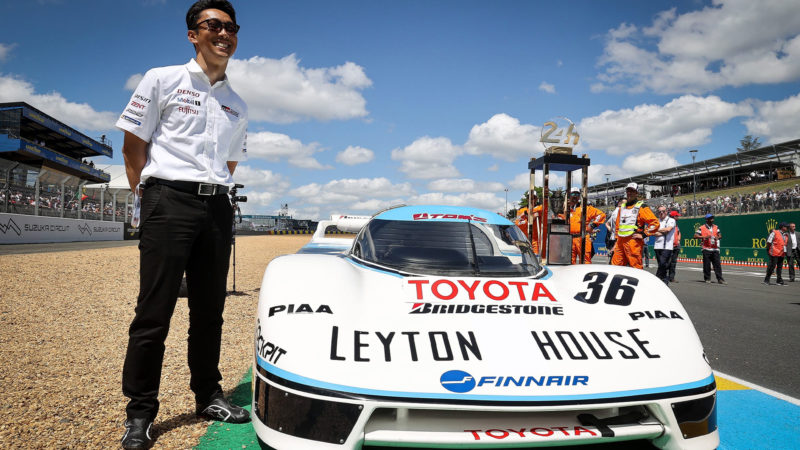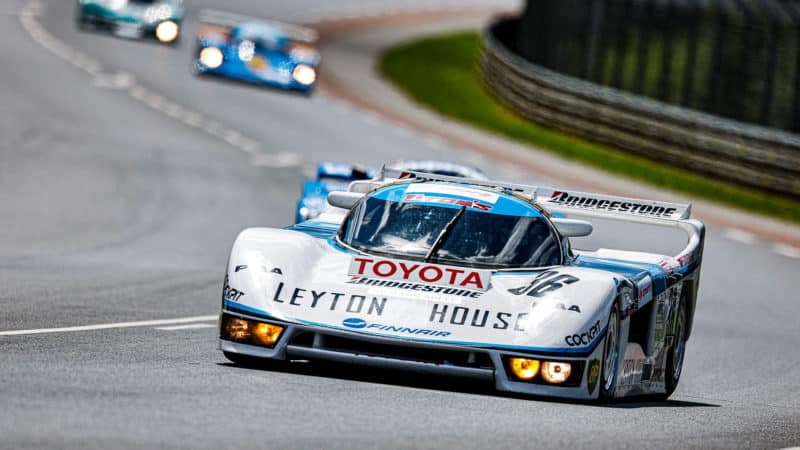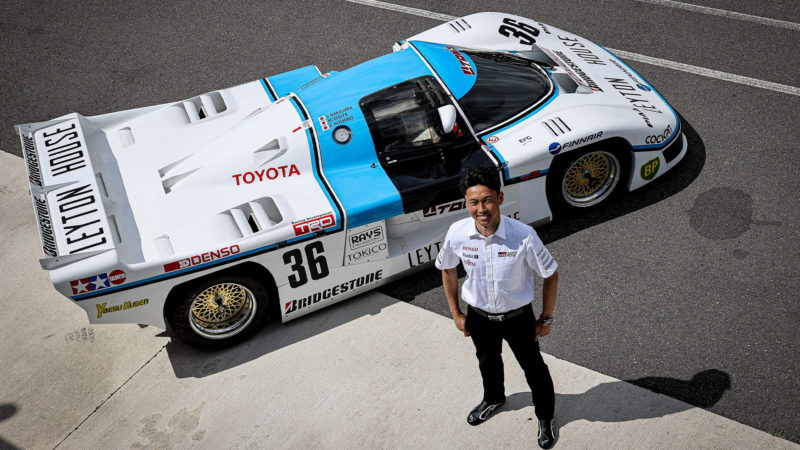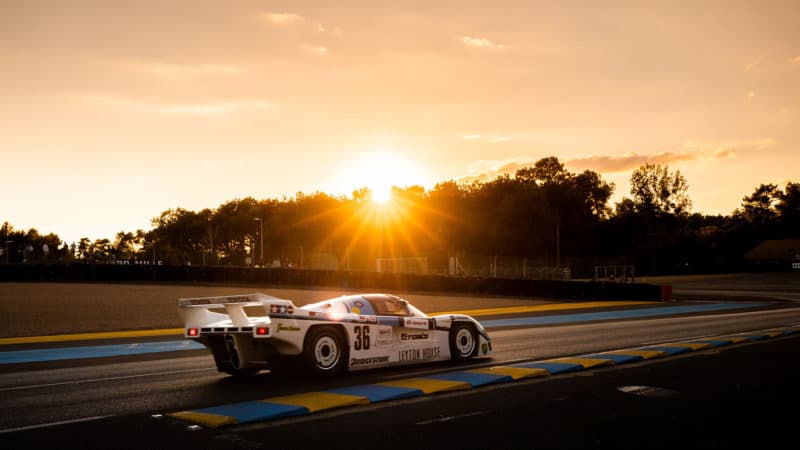The Japanese driver also demonstrated the car before this years Le Mans, delivering the winners’ trophy to the starting grid – yet even that was a daunting task for a race driver who has nearly seen it all.
“Basically the only chance to drive the car before was at our factory, when I had a little bit of shakedown outside, not on a race track!” he says.
“My biggest concern or pressure was to not stall the car in front of 250,000 people! But otherwise it was a really nice moment.”
As Nakajima highlighted prior to his historic race appearance, his father had pointed out the inherent difficulties in driving the 85C. Though it paved the way for more successful prototypes like the TS010 which Sekiya came second with in ’92, it’s not a car without its flaws. Amongst other worries highlighted by Nakajima is the fact the car is built from steel, not carbon fibre.
“Back in those days there were no chicanes, so they were flat out from Tertre Rouge until the Mulsanne corner,” he says. “The bodywork used to shake at high speed, and he was suffering from a lot of vibrations just from going in a straight line!

All smiles, but Nakajima admits to the 85C being an intimidating driving experience
Toyota
“There is also a small kink after the second chicane, which is basically nothing for us now, but back then they were doing about 350kph [220mph] or more through that section – ot was a big, big challenge in those cars.
“I’m not sure if it was because of the lights on the car or the seating position, but my Dad struggled to see on the straight. The headlights on the cars and lighting round the track were not as good as they are now. Imagine the kind of accident you could have – I feel like I’m a little bit lucky to race in this era.”
Much in contrast to the smooth paddle shifts driver use now, Satoru and his team-mates had to make do with a no-nonsense five-speed Hewland gearbox and H-pad shifter, only increasing his son’s respect for his father’s achievement.

Nakajima and Sekiya would put in a consummate performances to win their class
DPPI
“Back then, I believe it was more challenging than it is now because the driver had to nurse the car a lot more,” he explains.
“It was so much easier to make a single mistake for the gear shift which could damage the gearbox, which doesn’t happen with a semi-automatic sequential.




